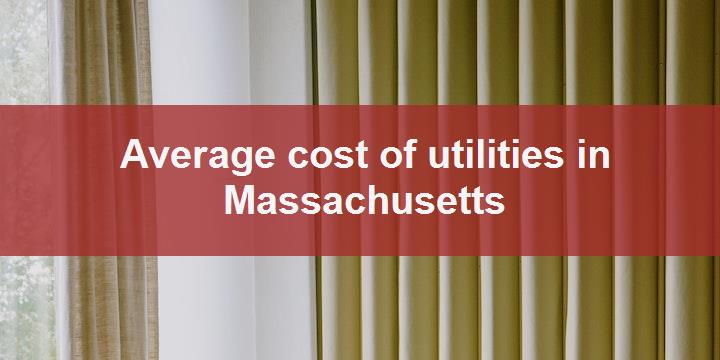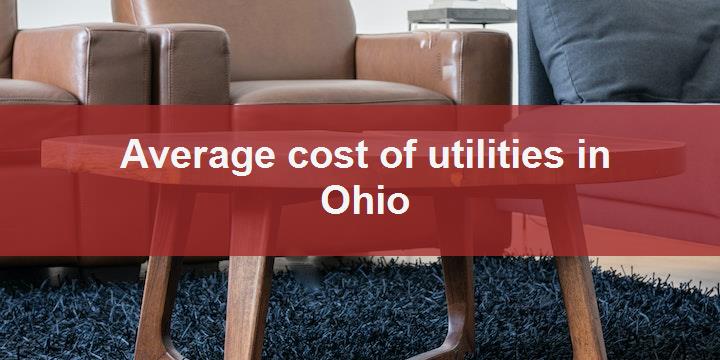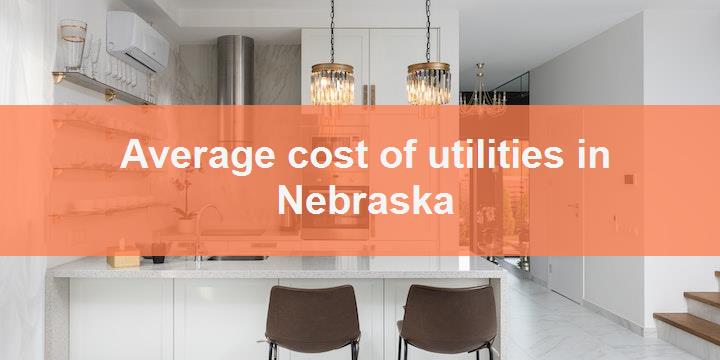Understanding the average cost of utilities in Massachusetts is essential for residents looking to manage their monthly budgets. For a family of three living in a single-family home with standard appliances used year-round, the average cost of utilities in Massachusetts is $800.22 in 2025. Massachusetts, with its cold winters and warm summers, experiences seasonal fluctuations in utility expenses. In this article, I will provide a detailed breakdown of utility costs for different household setups and seasonal changes, helping you gain a clear understanding of what to expect in Massachusetts.
Average Electric Bill in Massachusetts
Planning for the average electric bill in Massachusetts is a key aspect of managing household expenses. For a family of three living in a single-family home, the average electric bill in Massachusetts is $297.16 in 2025. The state’s climate, with its harsh winters and warm summers, greatly affects electricity consumption and costs. The average bill is calculated by factoring in both winter ($357.35) and summer consumption ($236.97).
Massachusetts vs. Connecticut: Summer Energy Cost Comparison
To highlight the differences in energy costs, the table below compares the electricity expenses for a large single-family home with four people during the summer in Massachusetts and Connecticut. This comparison provides insights into how energy consumption and costs vary between these neighboring states.
| Criteria | Massachusetts | Connecticut |
|---|---|---|
| Total Consumption (kWh) | 862.12 kWh | |
| Electricity Rate (cents/kWh) | 29.36 ¢/kWh | 28.89 ¢/kWh |
| Estimated Monthly Cost | $253.12 | $249.07 |
| Detailed Cost Breakdown | ||
| Base Usage: 412.12 kWh | $121.00 | $119.06 |
| Refrigerator: 120 kWh | $35.23 | $34.67 |
| Air Conditioner: 240 kWh | $70.46 | $69.34 |
| Clothes Dryer: 90 kWh | $26.42 | $26 |
| Massachusetts estimated monthly cost is higher than Connecticut by 1.63%. | ||
Historical Electricity Price Trends
The historical chart above displays electricity price trends for large single-family homes in Massachusetts during the summer, offering valuable insights into price fluctuations over time. These trends can help homeowners anticipate potential changes in energy costs and plan their budgets accordingly.
Electricity Cost Comparison Across Various States
This table provides a comprehensive comparison of electricity costs across different states, considering various household types and seasons. It offers a broad perspective on utility expenses.
| State | People | Household Type | Season | Appliances | Electric Monthly Bill |
|---|---|---|---|---|---|
| New York | 3 | One-bedroom apartment | Summer | Fridge, AC, Dryer |
$148.77 |
| California | 4 | Single-family large | Winter | Heater, Dryer, Fridge |
$407.08 |
| Texas | 3 | Townhouse | Winter | Heater, Dryer, Fridge |
$168.56 |
| Florida | 3 | Single-family small | Summer | Fridge, AC, Washer |
$102.05 |
| Illinois | 4 | Two-bedroom apartment | Summer | Fridge, AC, Washer |
$99.77 |
| Virginia | 2 | Studio | Winter | Heater, Fridge |
$127.93 |
| Massachusetts | 2 | Townhouse | Summer | Fridge, AC, Washer |
$194.51 |
For a more detailed and personalized utility expense estimate, visit our Electricity Bill Calculator. Adjust the parameters to match your household specifics and get an accurate estimate tailored to your needs.
Average Gas Bill in Massachusetts
Managing household expenses in Massachusetts means keeping a close eye on gas costs, especially during the colder months. For a family of three living in a single-family home, the average gas bill in Massachusetts is $228.74 in 2025. The state’s climate, with its cold winters and mild summers, directly influences gas consumption and costs. The average bill is determined by factoring in both winter ($335.05) and summer usage ($122.43).
Massachusetts vs. Rhode Island: A Summer Gas Usage Comparison
To provide a clearer understanding of gas costs, the table below compares the gas expenses for a large single-family home with four people during the summer in Massachusetts and Rhode Island. This comparison highlights how energy consumption and pricing vary between these neighboring states.
Gas Bill Comparison Overview
| Criteria | Massachusetts | Rhode Island | Avg. USA |
|---|---|---|---|
| Total Consumption (MCF) | 6.99 MCF | ||
| Gas Rate ($/MCF) | $20.92 | $23.44 | $17.73 |
| Estimated Monthly Cost | $146.27 | $163.89 | $123.97 |
| Appliance Cost Breakdown | |||
| Outdoor Grill | $11.55 | $12.94 | $9.79 |
| Water Heater | $84.68 | $94.89 | $71.77 |
| Gas Stove | $19.25 | $21.56 | $16.31 |
| Gas Oven | $30.79 | $34.50 | $26.10 |
| Massachusetts's estimated monthly cost is lower than Rhode Island by 10.75%. | |||
| Massachusetts's estimated monthly cost is higher than the Avg. USA by 17.99%. | |||
Examining gas usage in Massachusetts and Rhode Island during the summer showcases the influence of climate, household size, and appliance use on overall energy costs. This table offers valuable insights for residents seeking to optimize their energy expenses.
The historical chart above tracks gas price trends for large single-family homes in Massachusetts during the summer, providing homeowners with useful insights into pricing fluctuations over time. Understanding these trends can help predict future gas costs and assist in household budgeting decisions.
Gas Cost Comparison Across Various States
Here is a detailed comparison of gas costs across different states, considering various household types and seasons. This table offers a comprehensive view of utility expenses.
| State | People | Household Type | Season | Appliances | Gas Monthly Bill |
|---|---|---|---|---|---|
| New York | 3 | Townhouse | Summer | Water heater, Stove, Oven |
$88.71 |
| Florida | 2 | Studio | Summer | Water heater, Stove, Oven |
$82.41 |
| Vermont | 4 | Single-family small | Winter | Gas heating, Dryer, Oven |
$298.95 |
| Texas | 3 | Townhouse | Winter | Gas heating, Dryer, Oven |
$279.14 |
| Illinois | 3 | Single-family small | Summer | Water heater, Stove, Oven |
$79.83 |
| South Carolina | 4 | Single-family large | Summer | Water heater, Stove, Oven |
$134.85 |
| Michigan | 2 | Studio | Winter | Gas heating, Dryer, Oven |
$99.20 |
This comparison table offers a broad perspective on how gas costs vary across different states and household setups, helping you make more informed decisions about your energy usage.
For a detailed and personalized utility expense estimate, explore our Gas Bill Calculator. Customize the parameters to fit your household specifics and get an accurate estimate tailored to your needs.
Average Water and Sewer Bill in Massachusetts
Understanding the costs associated with water and sewer services is essential when relocating or investing in Massachusetts. With my extensive experience in real estate, I recognize how these expenses can impact your overall budget. In 2025, the average amount for water and sewer fees in Massachusetts is $64.00, making it a competitive option in terms of utility costs.
Comparing Water and Sewer Fees Across States
To provide a broader perspective, here’s how Massachusetts compares with other states in terms of water and sewer fees:
| State | Average Water and Sewer Fees |
|---|---|
| New York | $60.00 |
| Connecticut | $69.00 |
| Rhode Island | $52.00 |
| New Jersey | $82.00 |
| Pennsylvania | $51.00 |
| Vermont | $38.00 |
| New Hampshire | $47.00 |
| Maine | $54.00 |
Massachusetts’s water and sewer fees remain competitive, particularly when compared to higher-cost states like New York and New Jersey.
Innovative Water Efficiency Strategies
Massachusetts is actively implementing technology-driven solutions to improve water efficiency and lower costs:
- Smart Water Meters: These devices provide real-time monitoring, helping residents detect leaks early and reduce unnecessary water waste.
- Advanced Filtration Systems: State-of-the-art filtration technology ensures high water quality and safety across communities.
- Automated Irrigation: Smart irrigation systems optimize water use in landscaping, preventing overwatering and reducing utility costs.
Community Involvement and Incentives
Massachusetts strongly supports water conservation through various community-driven initiatives:
- Public Awareness Campaigns: Residents can participate in state-sponsored campaigns promoting sustainable water usage.
- Grant Programs: Homeowners and local organizations can apply for grants that fund innovative water conservation projects.
- Educational Workshops: The state regularly hosts workshops and seminars on efficient water management practices.
Environmental Commitment
Massachusetts prioritizes environmental sustainability, ensuring that water management practices align with conservation efforts. By adopting water-efficient measures, residents play a key role in protecting the state’s natural resources.
Conclusion
From my extensive real estate experience, I can confidently say that Massachusetts’s reasonable water and sewer fees, combined with cutting-edge technology and strong community support, make it an attractive choice for homeowners and investors. Our team is here to provide expert guidance and up-to-date insights, helping you make informed decisions. Choosing Massachusetts means selecting a state that values both affordability and sustainability.
Garbage/Trash Removal Costs in Massachusetts
In Massachusetts, understanding the costs associated with garbage and trash removal is crucial for effective budgeting. The average cost for garbage and trash removal services in Massachusetts in 2025 is around $33.00. These expenses vary based on service providers, pick-up frequency, and additional recycling options.
Massachusetts prioritizes environmental sustainability, with many communities implementing robust recycling programs. These initiatives aim to minimize landfill waste and promote eco-friendly disposal methods, which can influence the overall cost of trash removal services.
Comparing Garbage/Trash Removal Costs Across States
To provide better insight, here’s how Massachusetts’s average garbage removal costs compare to other states:
| State | Average Cost |
|---|---|
| Massachusetts | $33.00 |
| Connecticut | $32.00 |
| Rhode Island | $32.00 |
| New York | $35.00 |
| New Jersey | $34.00 |
| Pennsylvania | $28.00 |
| Maryland | $31.00 |
| Virginia | $26.00 |
| Ohio | $26.00 |
| Michigan | $28.00 |
Massachusetts’s garbage removal costs are higher than some states, reflecting its commitment to advanced waste management and sustainability programs. However, these investments contribute to a cleaner environment and better long-term waste management solutions.
Planning ahead for these costs ensures effective budgeting. If you have any questions or need assistance in managing your utility expenses, our team is here to help.
Average Internet and Cable TV Bill in Massachusetts
In Massachusetts, managing internet and cable TV expenses is essential for effective budgeting. The average internet and cable TV expenses in Massachusetts in 2025 is around $113.66. The state offers a range of providers, allowing residents to select plans that best fit their needs and budgets.
Massachusetts benefits from a competitive market, with multiple providers offering high-speed internet and extensive cable TV options. This competition helps regulate prices while ensuring residents have access to high-quality services.
Internet and Cable TV Provider Pricing in Massachusetts
| Provider | Internet Price | Cable TV Price | Bundle Price |
|---|---|---|---|
| Comcast | $59.99 | $70.99 | $114.99 |
| Verizon | $60.99 | $71.99 | $121.99 |
| ATT | $55.99 | $66.99 | $103.99 |
These prices provide a snapshot of available options, helping you compare and choose the best plan for your household.
Comparing Internet and Cable TV Costs Across States
To give a broader perspective, here’s how Massachusetts compares to other states in terms of internet and cable TV costs:
- Connecticut: $110.66
- Rhode Island: $113.66
- New York: $111.66
- New Jersey: $113.66
- Pennsylvania: $114.66
- New Hampshire: $114.66
- Vermont: $112.66
- Maine: $116.32
Compared to states like New York and Connecticut, Massachusetts offers relatively competitive rates, particularly when considering the widespread availability of high-speed fiber-optic internet.
To get the best value from your internet and cable TV services, we recommend comparing providers, bundling services when possible, and regularly reviewing your plan to ensure you’re not overpaying. 🌐📺
Home Phone and Mobile Phone Costs in Massachusetts
In Massachusetts, understanding the costs associated with home phone and mobile phone services is essential for effective budgeting. The average home phone and mobile phone costs in Massachusetts in 2025 is around 63.66. These expenses vary based on service provider, location, and specific plan offerings.
Massachusetts benefits from a competitive telecommunications market, with multiple providers offering a range of pricing and service options. This competition helps keep prices reasonable while ensuring access to reliable coverage.
Home and Mobile Phone Provider Pricing in Massachusetts
| Provider | Mobile Phone Price | Home Phone Price |
|---|---|---|
| Verizon | $68.99 | $35.99 |
| AT&T | $63.99 | $27.99 |
| T-Mobile | $57.99 | Doesn’t provide |
These prices offer insight into available options, helping residents select the most cost-effective plan for their needs.
Comparing Phone Costs Across States
To provide a broader perspective, here’s how Massachusetts’s average home and mobile phone expenses compare with other states:
- New York: 65.49
- Connecticut: 68.32
- New Jersey: 66.66
- Pennsylvania: 64.66
- Rhode Island: 65.66
- New Hampshire: 65.66
- Maine: 65.66
- Vermont: 66.66
Compared to neighboring states like New York and Connecticut, Massachusetts offers relatively competitive phone service pricing, making it important for residents to explore different options to find the best value.
How to Save on Home and Mobile Phone Costs
- Bundle Services: Many providers offer discounts when bundling home phone, mobile, and internet services.
- Check for Promotions: Carriers frequently offer promotional deals, especially for new customers or those switching providers.
- Evaluate Your Usage: Selecting a plan that aligns with your actual data and call needs can prevent overpaying for unnecessary features.
- Consider MVNOs: Mobile Virtual Network Operators (MVNOs) like Mint Mobile and Google Fi often provide lower-cost alternatives to major carriers.
To get the best value, we recommend reviewing different providers and plans regularly. Prices and services can change frequently, so staying informed is key to making the most cost-effective choice. 📞📱
Stay Updated
Our team updates this article every month with the latest rates and provider information, ensuring you have access to the most up-to-date insights. Be sure to check back regularly to stay informed on cost-saving opportunities and service improvements. 🌟
FAQ
Q: 💡 What is the average monthly electric bill in Massachusetts in 2025?
A: The average monthly electric bill for Massachusetts residents in 2025 is approximately $297.16.
Q: 🔥 What is the average monthly gas bill for Massachusetts residents in 2025?
A: The average monthly gas bill for Massachusetts residents in 2025 stands at approximately $228.74.
Q: 🚰 What is the average monthly water and sewer bill in Massachusetts in 2025?
A: The average monthly water and sewer bill in Massachusetts in 2025 is around $64.00.
Q: 🗑️ What is the average monthly garbage and trash removal cost in Massachusetts in 2025?
A: The average monthly garbage and trash removal cost in Massachusetts in 2025 is about $33.00.
Q: 📡 What is the average monthly internet and cable TV bill in Massachusetts in 2025?
A: The average monthly internet and cable TV bill in Massachusetts in 2025 is approximately $113.66.
Q: 📱 What is the average monthly home and mobile phone bill in Massachusetts in 2025?
A: The average monthly home and mobile phone bill in Massachusetts in 2025 is around 63.66.
Q: 🧾 What is the total average monthly cost of utilities in Massachusetts in 2025?
A: The total average monthly cost of utilities in Massachusetts in 2025 is approximately $800.22.



